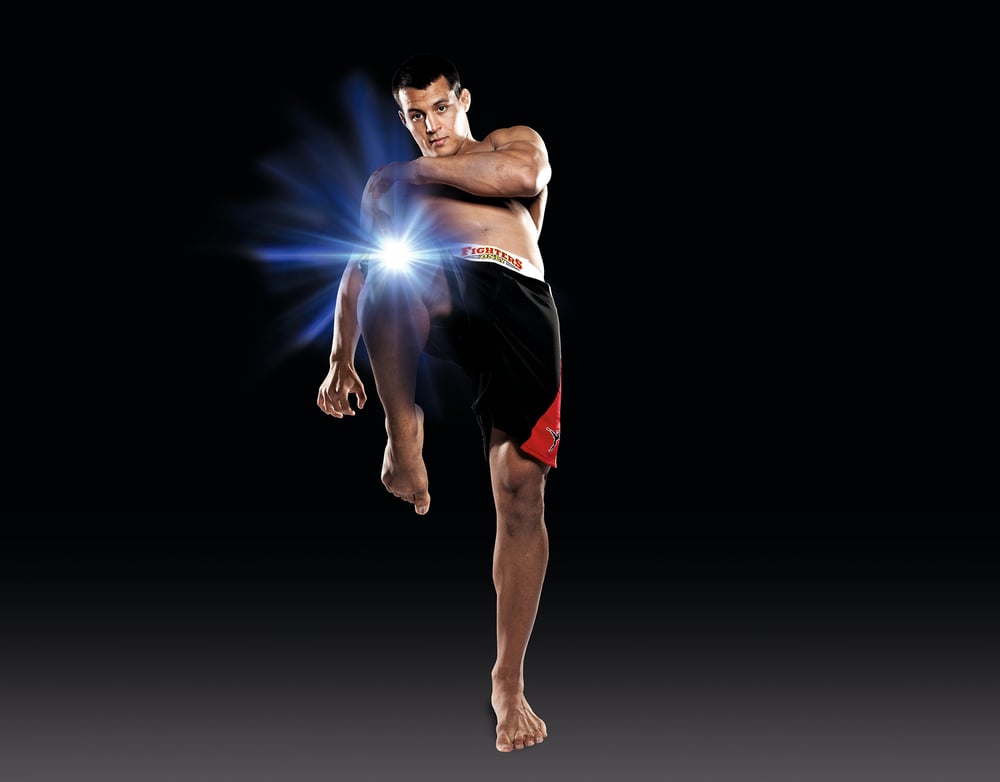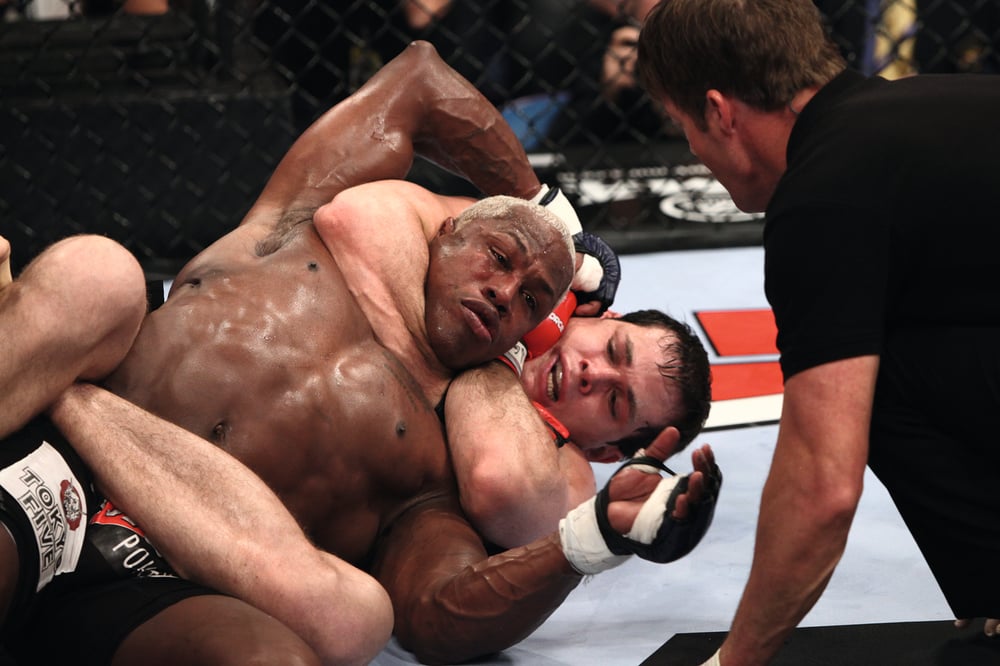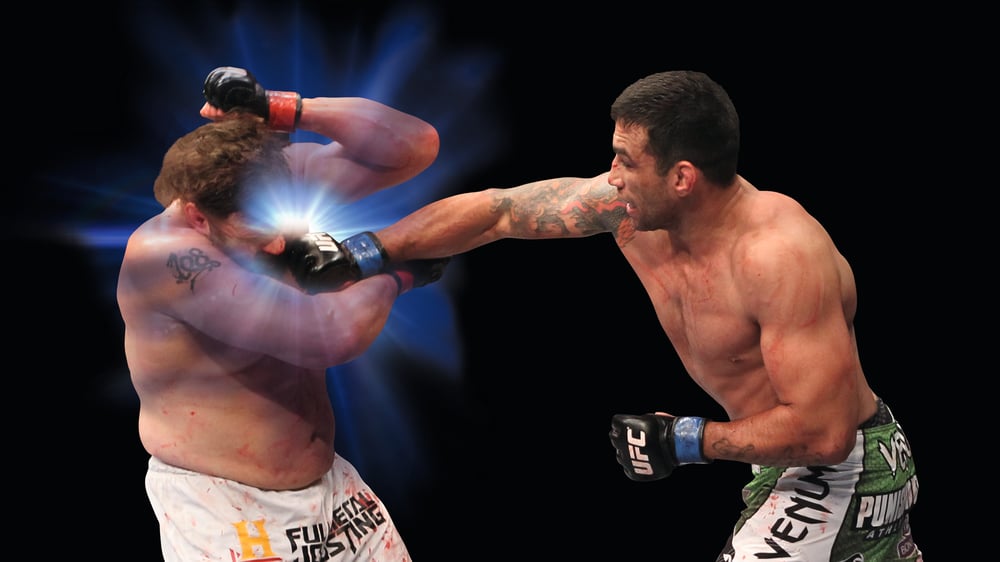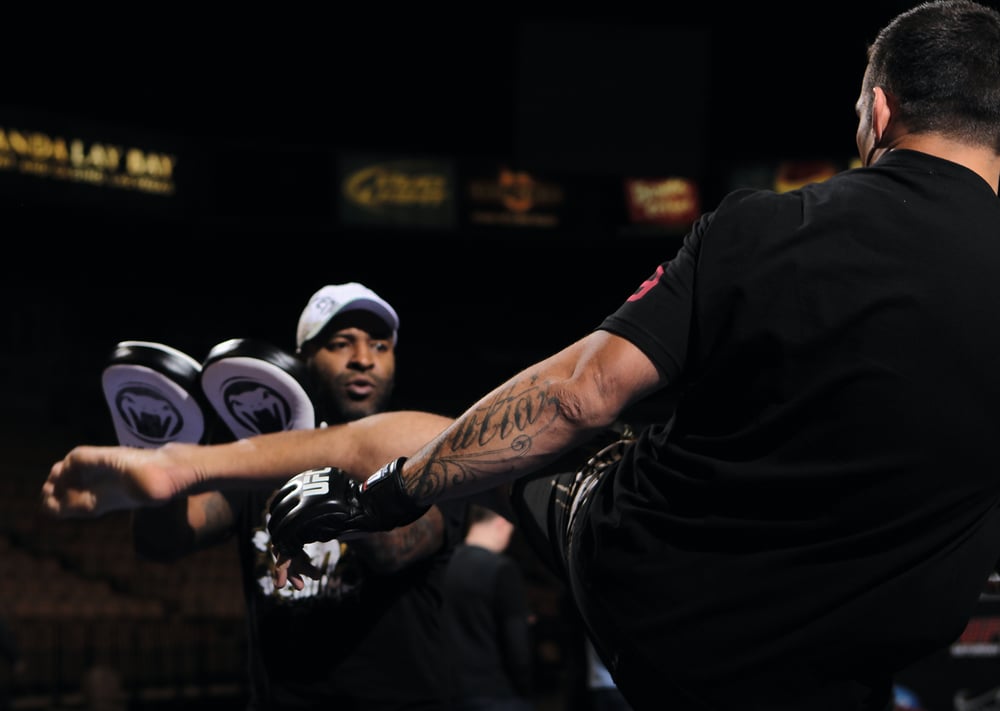
Issue 094
November 2012
Fighters Only investigates why a succession of acclaimed jiu-jitsu black belts are now ditching their ground game to stand and trade inside the Octagon
Fabricio Werdum could list any number of reasons for moving to California from his native Brazil. Safety and security for his family, more opportunities for himself – financial and otherwise – in the mixed martial arts world, the chance to live near the beach. But the deciding factor to uproot and move from one continent to another always comes back to one person: Rafael Cordeiro.
“Rafael is the reason I moved from Brazil to America,” Werdum says with a matter of fact tone, like saying the sky is blue. “He’s responsible for my growth in MMA. For me to be the best I can be in this sport, I knew I had to train with Rafael.”
At 39, Cordeiro is only four years older than his student, so instead of a father figure, the two share a bond more like brothers. A decorated Muay Thai specialist, who after working nearly all his life at the famed Chute Boxe Academy in Curitiba, Brazil, opened his own gym, King’s MMA, in Huntington Beach, California.
Few jiu-jitsu players in the world have a résumé that can stack up to 35-year-old Werdum. But it’s the golden belt around a fellow Brazilian’s waist, rather than the black belt around his own, that now defines his career. To get another shot at Junior dos Santos and, with that, the UFC heavyweight title, Werdum knows he must improve his level of striking. After all, Junior is arguably the best striker in any weight division of the sport.
“One of his first goals after coming over here was to become a complete striker and he’s just about there,” says Cordeiro. “He wants that belt and he’s worked very hard to become very comfortable whether the fight is standing or on the ground. He’s knocking guys out and doing damage with his kicks. Everyone knows now that Fabricio has changed. He’s becoming a striker.”

Reviewing his past three fights it’s easy to see that level of growth. Instead of turtling up and pulling guard like he did in his Strikeforce heavyweight grand prix quarter-final loss against Alistair Overeem in June 2011, Werdum aggressively attacked his first two opponents during his second stint with the UFC.
He landed some vicious kicks, which had his foe been anyone other than punishment-absorbing warlord Roy Nelson, their night likely would have ended prematurely at UFC 143. And hot on the back of that unanimous points victory, Werdum stopped American Mike Russow amid a barrage of punches inside the opening round to the delight of his homeland fans and followers at UFC 147, which took place in Belo Horizonte, Minas Gerais, Brazil.
But Werdum – and a handful of other stand-out Brazilian grappling specialists want more – and they know the only way to attain their lofty goals is to convert their slick submission skills into those of an all-around martial artist. For guys like Roger Gracie, Jorge Gurgel, Vinny Magalhaes and Werdum, the initial transition from grappling masters to equally proficient strikers was like brushing their teeth as adults, compared to tying their shoes for the first time as a child.
“The transitioning from jiu-jitsu to MMA was so very hard in the beginning because I didn’t really know how to punch or kick,” Werdum says. The Brazilian-born and Las Vegas-based Magalhaes suffered similar frustrations from his first standup lessons. “Having grown up with such a high level of jiu-jitsu training, I kind of just thought I could take somebody to the ground and then submit them,” he says with a laugh. “But in reality that’s not how MMA works.”

Yet not every Brazilian is born with a black belt and finds striking a foreign language. In addition to Dos Santos, UFC middleweight champ Anderson Silva is regarded by most MMA pundits as one of the top three strikers in the world, along with light heavyweight champ Jon Jones. So what gives? Is transitioning from grappler to striker a matter of nature vs nurture? Fight or flight? Entertaining the crowd or winning via your strengths?
“It’s not like striking is that much harder than grappling, it’s not,” says Magalhaes, who was preparing to make his second run in the UFC at UFC 152. “It’s more about the dedication of doing it and training consistently at it at a high level. You have to spar every day with high-level partners to really make a difference. And it comes down to what age you start training and how long you train at it.
“I guess when I knew I needed to make a major transition was after I made the finals of The Ultimate Fighter,” continues Magalhaes, jiu-jitsu instructor for FO’s sparring partner publication Train Hard Fight Easy. “That’s when I began really concentrating on my collective MMA training overall and focusing specifically on my striking.”
Cordeiro points out that several Brazilian jiu-jitsu pros have never encountered the physicality of MMA and don’t know what to expect when they first step into a cage. “Obviously, getting hit in the face the first few times can make the transition from jiu-jitsu to MMA very hard,” he tells FO. “But in reality, getting hit, hit, hit is the only way you’re going to learn the sport and pick it up.”
Then there is always those darn fans, many of whom label the great art of grappling as ‘boring,’ and can’t wait for the third man to stand fighters up to slug it out. “A lot of Brazilian jiu-jitsu fighters, a lot of great ground guys, get caught up in trying to give the crowd what they want instead of sticking to their game plan or what they’re good at,” says Jorge Gurgel, a jiu-jitsu trainer in Cincinnati, Ohio. “Many of them suffer similar consequences like I did.”

But Gurgel – who had a 9-1 record before his first UFC fight, but only went 5-7 in UFC and Strikeforce bouts – says all the critics who bash him for not utilizing his grappling prowess are wrong. “I don’t regret anything,” he says. “That’s just how I express myself. I love doing something new. I did so much jiu-jitsu all my life, when I’m free in the cage it’s just natural that I strike. I just see the guy in front of me and I don’t see anything else. I don’t hear anything else. I enjoy kicking and punching and the adrenaline rush that I feel. It’s never for the crowd, it’s just the way I feel when I’m in there.”
But Gurgel, Rich Franklin’s buddy and long-time training partner, freely admits had he fought different, his fight path would likely have went a different direction. “I could have been a much better, more successful fighter, if I had performed and used my art, which is what I’m known for; my ground game,” Gurgel admits. “Thank God my fighters are smarter than I am.
“I use myself as an example. I roll with them every day, I spar with them everyday. They know what I can do. I say, ‘Look at my fights, watch my fights. Look what I’ve done. I brought myself down to a level of competition where I would have dominated had I listened to somebody and done what I was supposed to do. Don’t make the mistakes I made. Listen to me and do what I say.’”
Gurgel points to fellow Brazilian and BJJ practitioner Demian Maia as a fighter fans have tried to coax into becoming a striker, but is mixing ever-improving stand-up into his repertoire where he can utilize his submission prowess. “I absolutely think some fighters get caught up with what fans say, but I don’t think Demian does. I know he uses his striking to lure his opponent to the ground,” Gurgel says of Maia, who recorded his first TKO victory (albeit injury-aided) in 14 UFC bouts when he took out Dong Hyun Kim in just 47 seconds at UFC 148.
“He’s a floor master. He’s starting to really show improved wrestling and striking, which will make him that more dangerous in getting the fight where he wants it to go on the ground.”

But the reverse statement seems to be true for Strikeforce’s Roger Gracie, who carries the most famous surname in grappling history. “People expect me to take people down every time and submit them,” Gracie says. “But to gain control on the ground I first have to get them there, and that’s what I’ve been trying to do lately.”
It certainly showed in his decision win over Keith Jardine in July. While the son of Reila Gracie (daughter of Carlos Gracie) and Mauricio Motta Gomes has yet to record his first stand-up finish, he said he was excited about how his striking looked during his middleweight debut, where he bloodied the veteran in the opening rounds and cruised to the decision with a healthy dose of grappling.
Gracie adds: “I want to train as much as I can on my stand-up, but if I have it my way I’m always going to try and take him down. If I start to think about just knocking people out, I’ll be in a kind of danger zone of not fighting to my strengths. My goal is to always use my strength, which is most likely submitting a person. But if I keep training the way I have been, then maybe I’ll be knocking some people out in the near future.”
Much like Werdum’s confidence in his second go-around with the UFC, Magalhaes believes he’s a much more rounded fighter in 2012. “I’m completely different than I was then, I’m 600% better than I was. I would try to strike and then pull guard. Now I have control of where I want to take the fight because of the skills [I’ve developed].
“I got on The Ultimate Fighter basically ‘cause I had a good relationship with Anderson [Silva] not that I was one of the top MMA guys at the time. I was still really concentrating on jiu-jitsu competitions and wasn’t in the gym training to be an all-around mixed martial artist. But once you are in the UFC and you see it and you get cut, you realize how hard it is to get back. I want to be back in there, I want to show how much I’ve grown and improved and all the hard work since I was last there.”
Magalhaes, who has racked up a 7-1 record since leaving the UFC, credits his outstanding cast of stablemates at Xtreme Couture for his continued striking growth. “It’s hard not to improve your game and especially your confidence in different parts of your game when you are training with so many UFC and Strikeforce guys,” he adds.
Meanwhile, Cordeiro believes, soon enough, thanks to the big events the UFC has hosted recently in Brazil and global attention the sport is constantly gaining, there won’t be as much transition talk for grapplers to strikers. That the two arts will completely intertwine.
“I remember the first time I saw Anderson train, he was just on another level with his all-around game,” Cordeiro says. “With all the young kids training all over the world, you’re going to see a lot more Andersons from Brazil, from everywhere. Fighters will continue to round into complete packages.”
...









